Computer programming history

Listed below are the important events in history relating to computer programming, including release dates for many hard drive technologies.
1843
Ada Lovelace is credited as being the first person to describe or write a computer program. In 1843, she described an algorithm to compute Bernoulli numbers using the Analytical Engine.
1889
The Hollerith tabulating machine was invented by Herman Hollerith in 1889, allowing for data to be programmatically counted and tabulated.
1951
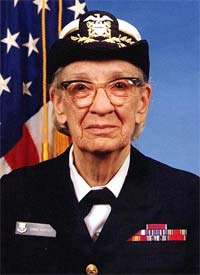
A-0 (Arithmetic Language version 0) was the first electronic computer compiler written by Grace Hopper in 1951 for the UNIVAC (Universal Automatic Computer) I computer.
1956
One of the first programming languages, FORTRAN (Formula Translation), was introduced to the public on October 15, 1956. It was developed by John Backus and others at IBM.
1958

The second-oldest programming language, LISP (list processor), was developed by John McCarthy and was first used in 1958.
1959
COBOL (Common Business Oriented Language) started being developed in 1959 by Grace Hopper and Bob Bemer.
1963
CPL (Combined Programming Language) began development in 1963 at the University of Cambridge and the University of London.
1964
The original BASIC programming language was developed by John Kemeny, Mary Keller, and Thomas Kurtz and was introduced to the public on May 1, 1964.
1965
Simula the first object-oriented programming language was developed around 1965 by Ole-Johan Dahl and Kristen Nygaard.
1966
Martin Richards developed the BCPL (Basic Combined Programming Language) programming language in 1966, which became popular due to its portability.
The MUMPS programming language was developed by Neil Pappalardo at Massachusetts General Hospital in 1966.
1967
Known for its graphics capabilities, Logo was created by Seymour Papert in 1967.
1971
Pascal was developed in 1971 by Niklaus Wirth.
1972
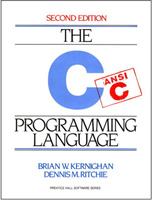
Dennis Ritchie and Brian Kernighan developed the C programming language at Bell Labs in 1972.
Alain Colmerauer and colleagues developed the Prolog programming language in 1972 at the University of Marseilles.
Smalltalk was the second-ever object-oriented programming language and the first true IDE (integrated development environment), developed by Alan Kay and others at Xerox PARC (Palo Alto Research Center) in 1972.
1974

SQL (Structured Query Language) was developed by Edgar Codd in 1974 and is still important and widely used today.
1975
A variation of LISP, the Scheme programming language, was created in 1975 by Guy Steele and Gerry Sussman at MIT's Artificial Intelligence lab.
The Altair BASIC programming language was developed by Bill Gates, Paul Allen, and Monte Davidoff and was made available for use on January 2, 1975. It was used to create programs for Altair computers.
1979
Development of the C++ programming language was started in 1979 by Bjarne Stroustrup. Originally called "C with classes," C++ is one of the most widely used programming languages.
Oracle released the first commercial version of SQL in 1979.
The Department of Defense developed the Ada programming language, originally named DoD-1, and named it after Ada Lovelace in May 1979.
1984
FoxPro, a programming language for developing database applications was released by Fox Software in 1984.
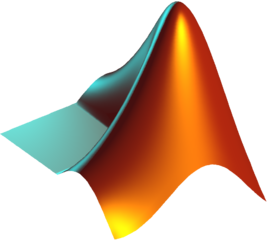
Cleve Moler started developing the MATLAB programming language in the late 1970s, and it was released to the public with the MATLAB software package in 1984.
1987
The open source programming language Perl, developed by Larry Wall, was introduced in 1987. It is commonly used in creating CGI (common gateway interface) scripts and programming web applications.
1988
Developed in the mid-1980s by Brad Cox and Tom Love, the Objective-C programming language was officially licensed by NeXT in 1988.
A high-level interpreted programming language developed as part of the GNU (GNU's Not Unix) project, Octave was released in 1988 and designed for numerical analysis.
1990
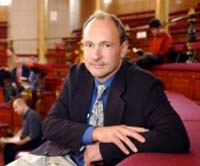
Tim Berners-Lee developed HTML (hypertext markup language) in 1990.
Haskell, a general-purpose programming language, was introduced in 1990.
Engineers at Apple developed the Dylan programming language in the early 1990s. Dylan was designed to resemble the syntax of the ALGOL (algorithmic language) programming language.
1991

Python started development in 1989 by Guido van Rossum and released to the public in 1991.
Visual Basic was developed by Alan Cooper and released in May 1991.
1993
Lua was created in 1993 by engineers at the Pontifical Catholic University of Rio De Janeiro, Brazil.
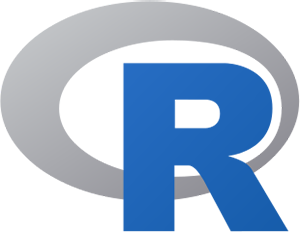
R is a programming language created by Robert Gentleman and Ross Ihaka and introduced in 1993.
1994
The concept of CSS (cascading style sheets) was started by Håkon Wium Lie in 1994. W3C introduced the specification for CSS in 1996.
1995
Java was developed by James Gosling and other developers at Sun Microsystems and was introduced to the public in 1995.

The object-oriented programming language Ruby, developed by Yukihiro Matsumoto, was released in 1995.
Michael Hanus, Herbert Kuchen, and Juan Jose Moreno-Navarro introduced the experimental, multi-paradigm Curry programming language in 1995.
Racket is a general-purpose programming language developed by Matthias Felleisen in 1995.
A server-side interpreted scripting language, PHP (PHP: Hypertext Preprocessor), was developed by Rasmus Lerdorf starting in 1994 and released on June 8, 1995.
Originally named LiveScript when released in November 1995, JavaScript was developed by Brendan Eich and renamed as such in December 1995.
1996
Introduced in 1996, OCaml is an object-oriented version of the Caml programming language.
1998
XML (extensible markup language) is a markup language, with the specification for XML being developed by W3C and recommended on February 10, 1998.
1999
Development of the D programming language started in December 1999. D is a higher-level language compared to C++.
2000
Based on C++ and Java, the C# programming language was developed by Microsoft and introduced in June 2000. C# became an ISO standard in 2003.
The programming language DarkBASIC was introduced in 2000.
2003
The experimental, multi-paradigm programming language Brooks was proposed by Petra Hofstedt in 2003.
The object-oriented programming language Scala was introduced in 2003.
2005
Don Syme developed the F# programming language, and Microsoft introduced it in 2005.
2007

The Go programming language was developed at Google starting in 2007. It was completed and introduced to the public in 2009.
Rich Hickey developed the Clojure programming language and released the first version in 2007.
2008
Introduced in 2008, Nim is a programming language used to develop software requiring strict limits on system memory usage.
The object-oriented programming language Reia was introduced in 2008.
2010
The multi-paradigm CoffeeScript programming language, capable of being compiled into JavaScript, was officially released in 2010.
2011
Google developed the open source web-based Dart programming language, introducing it to the public in October 2011.
2012

Julia was developed by Jeff Bezanson, Alan Edelman, Stefan Karpinski, and Viral B. Shah and released in 2012. It is a high-level programming language used for scientific computing.
2014
Babel is a general-purpose programming language developed in 2014 and used to create programs for conserving battery life and system resources on devices.
Created by Apple and released on June 2, 2014, the Swift programming language to create programs and apps for iOS, Mac OS X, the Apple Watch, and AppleTV.
2015
Graydon Hoare started developing the Rust programming language around 2010. After contributions from hundreds of people, it was officially released as version 1.0.0 alpha by Mozilla research on January 9, 2015.
